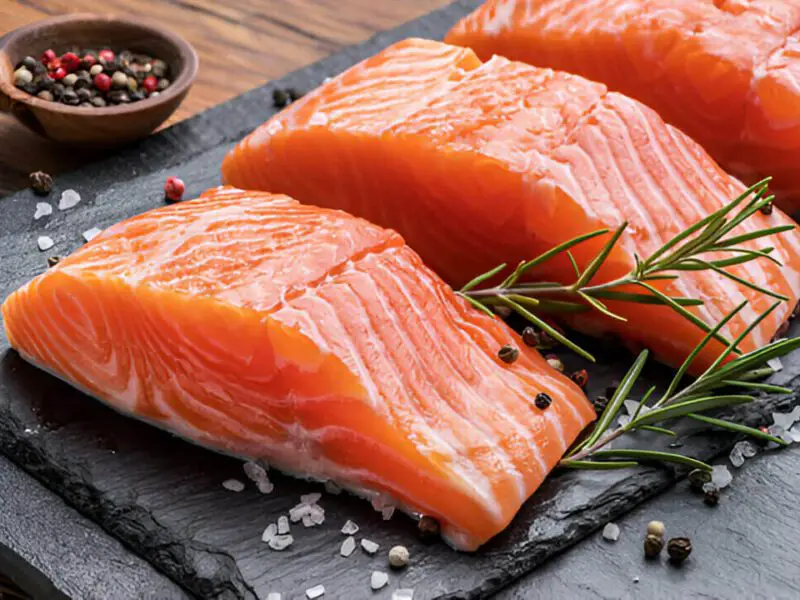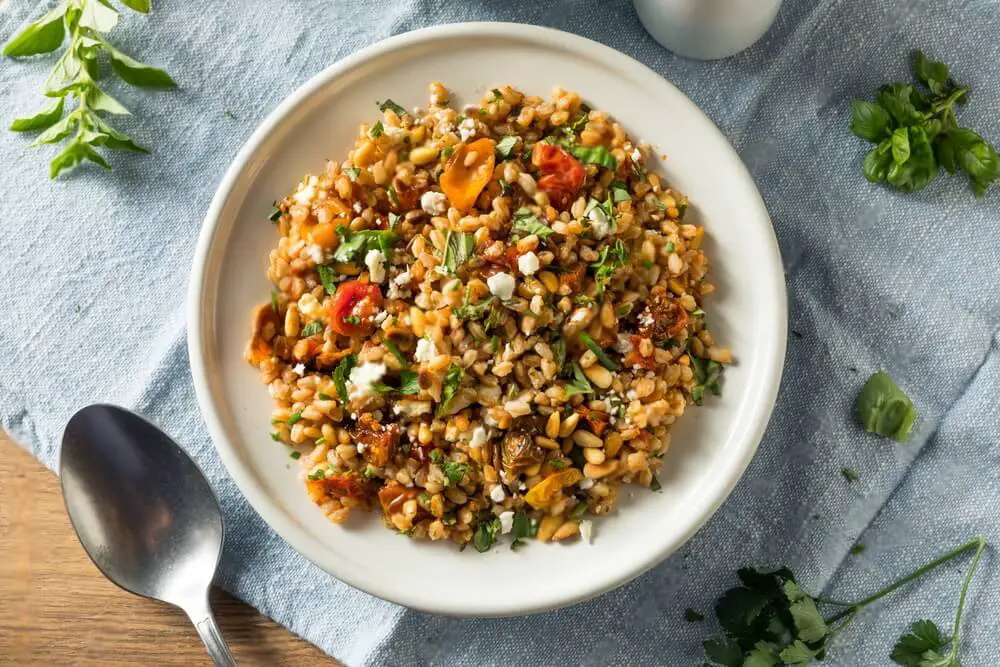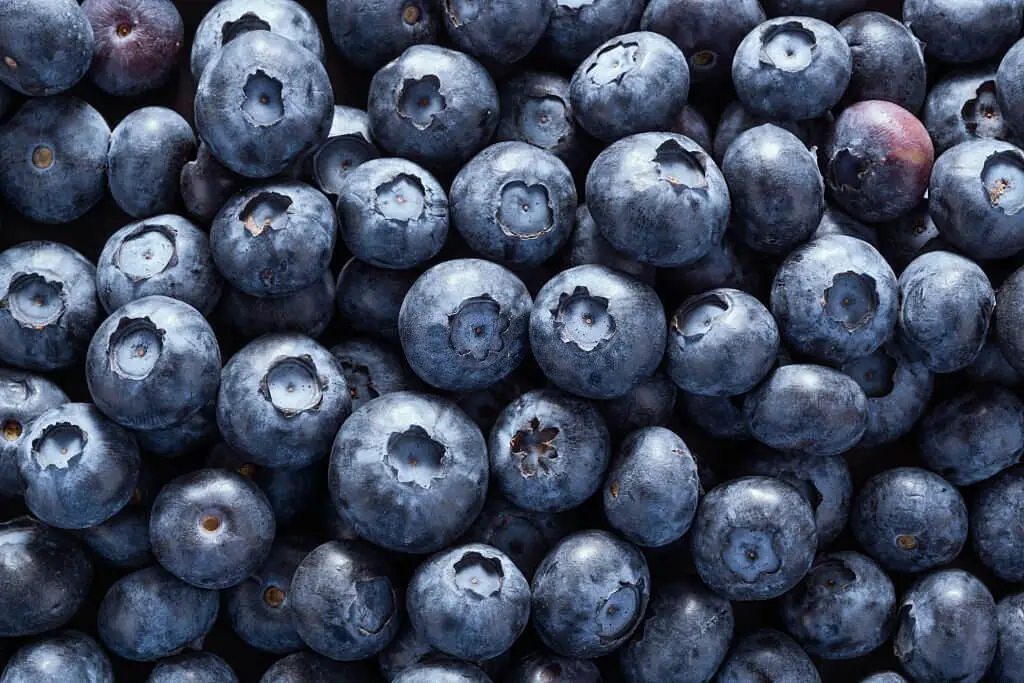You’re at the grocery store, perusing the seafood section for some fresh salmon to grill up for dinner. But as you scan the array of salmon fillets, you can’t help but wonder—what’s the deal with those “center cut salmon” fillets? They seem to be priced a bit higher than the others, and the label makes them sound pretty special. Well, let me break it down for you and solve this fishy mystery once and for all!
Choosing the right cut of salmon can make or break your meal, and the center cut is widely praised by chefs and seafood connoisseurs for a few key reasons. These babies aren’t just your run-of-the-mill salmon fillets – they’re the cream of the crop, the prime cuts that’ll have you saying “Oh mama!” after one buttery bite.
So what makes the center cut salmon so uniquely delicious and coveted? And is it really worth shelling out a few extra bucks for at the store? Stick around as I dive into the juicy details on this premium salmon cut. You’ll never look at a fish fillet the same way again!
About Salmon
Salmon is a remarkably versatile and nutritious fish that has been a dietary staple across many cultures for centuries. This pink-fleshed beauty belongs to the Salmonidae family, which includes trout, char, grayling, and whitefish. While there are several different species under the “salmon” umbrella, some of the most commercially popular varieties include Atlantic salmon, Chinook (or King) salmon, sockeye salmon, coho salmon, and pink salmon.
This mighty fish didn’t earn its superfood status for nothing. Salmon is absolutely packed with healthy omega-3 fatty acids like DHA and EPA, which provide a myriad of benefits – from reducing inflammation and lowering blood pressure to boosting brain and heart health. It’s also a fabulous source of high-quality protein, vitamins like D and B12, and minerals like selenium and potassium.
You can find salmon in a variety of forms at most grocery stores and seafood markets. For maximum freshness and flavor, your best bet is to seek out salmon marketed as “wild-caught” rather than farm-raised. Whole salmon can be purchased either fresh or frozen, with the salmon neatly gutted and scaled. But for quicker convenience, you’ll more commonly find salmon pre-cut into steaks or fillets.
Salmon steaks are cross-section cuts made perpendicular to the spine, portioned into personal “steak” sizes. These rectangular chunks contain the tender flesh as well as portions of the spine and skin. Grilling and pan-searing are fantastic ways to cook salmon steaks, creating a delightfully crispy exterior while keeping the inside moist.
Fillets are the lengthwise cuts made parallel to the spine, removed from the whole side of the salmon in one long piece. The sides can then be sliced into individual portion-sized fillets. These fillets contain no bones and have a higher flesh-to-skin ratio compared to steaks. Their oblong shape and delicate texture make salmon fillets extremely versatile for baking, broiling, poaching, and more.
Different Types Of Salmon Fillets

While a fillet may just seem like a simple slice of salmon, there’s actually quite a variety when it comes to the different cuts and portions you can buy.
The type of fillet you choose can seriously impact the taste, texture, and overall cooking experience. It’s all about understanding where the fillet was cut from, because not all fillets are created equal!
We’ll start with the tail end fillets. As the name suggests, these are the narrow fillets taken from the tapering tail portion of the salmon towards the bottom. Tail fillets have a few defining characteristics. For one, they are the thinnest and smallest of the fillet cuts, sometimes just a couple inches wide. They also tend to be bonier than other fillets since the tail section has more pinbones running through it.
On the upside, tail fillets develop an amazing crispy, crackling exterior when cooked properly due to their high skin-to-flesh ratio. Toss one on a smoking hot cast iron skillet, and you’re in for a crispy, delicate treat. Just be careful of overcooking since these fillets are so thin.
Moving along the fish, we come to the belly fillets – taken from the round, curvy underbelly area of the salmon. These fillets have an enticing, fatty richness since they’re cut from one of the highest fat-content sections. They also tend to be fairly thick and hearty in size. However, their uneven thickness from the taper can cause issues with even cooking.
Then there are the beloved center-cut fillets – the real stars of the show! These premium fillets come from the center portion of the salmon, right behind the head area. The center cuts have it all – thick, chunky portions with lovely marbling, an ideal rectangular shape, and relatively even thickness from end-to-end.
Because of their fabulous shape and size, center-cut fillets are extremely versatile for various cooking methods like baking, broiling, grilling, and pan-searing. You can achieve a succulent, evenly cooked fillet every time, without drier or undercooked areas. Their thickness also allows you to get that coveted crispy, crunchy skin, while the inside stays incredibly moist and tender.
And speaking of skin, salmon fillets can either come skin-on or skinless. While skinless is a little easier for serving and eating, skin-on fillets have some great benefits as well. That crispy salmon skin packs a ton of delicious, umami flavor and nutrition like omega-3s, vitamins, and collagen. It also helps protect the delicate flesh and retain its moisture during the cooking process. Just be sure to cook the skin side first to render out the fat and get it nice and crispy.
Last but not least, we have the oft-forgotten collar fillets. Butchers typically remove and discard the thin, bony collar muscles connecting the salmon’s belly flaps to its main body and backbone. But those collar fillets are surprisingly delicious! This scrappy cut has a fabulous firm texture with a more pronounced salmon taste compared to other parts of the fish. It’s a criminally underrated treat when cooked properly.
Center Cut Fillets
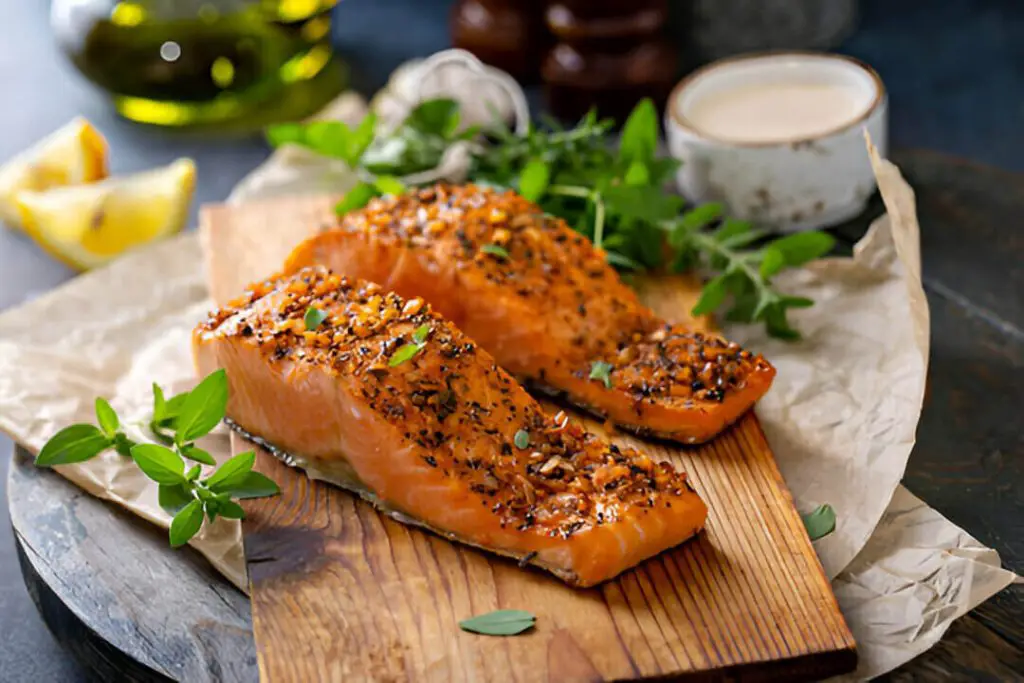
Of all the different salmon fillet options out there, the center cuts reign supreme for a number of excellent reasons. These chunks of salmon from the prime center portion simply can’t be beat in terms of flavor, texture, nutrition, and versatility.
Let’s start with why center cuts have such an incredibly luscious, melt-in-your-mouth texture. This comes down to the higher fat content and marbling concentrated in the center area of the fish. The center back muscles don’t get worked as hard as the tail end, resulting in more intramuscular fat and silky-smooth flesh. That fat keeps the center cut salmon incredibly moist and tender, even when cooked all the way through.
The even thickness of center cut fillets from end-to-end is also a huge advantage. Rather than tapering or being thicker on one side, these rectangular fillets have consistent thickness throughout. This allows for wonderfully even cooking without any overdone or undercooked parts. You can achieve perfect doneness from edge to edge.
Their uniform shape makes center cuts extremely versatile and well-suited for a variety of cooking methods – baking, broiling, pan-searing, grilling, you name it. The even thickness means you don’t have to constantly worry about uneven hot spots or turning/flipping the fillet at different times. Just pop it in the oven, on the grill, or in a skillet and let it work its magic hands-free.
Speaking of the grill, center cut salmon fillets are tailor-made for this cooking method. Their compact shape prevents any breaking or falling through the grill grates. You can get gorgeous char marks and a delightfully crispy, caramelized exterior, while the inside stays luscious and flaky. Few things beat the flavor of cedar-planked center cut salmon hot off the grill.
While we’re on the subject of flavor, these center cuts simply burst with rich, intense salmon taste. They come from the densest, most concentrated area of fish fat and natural oils. Translation? An unbelievably robust, almost candied salmon essence that makes your tastebuds sing.
Aside from being an umami-bomb, these center cut fillets are also packed with excellent nutrients that make salmon such a nutritional superstar. The higher fat content means you get a much bigger dose of those coveted long-chain omega-3 fatty acids like DHA and EPA. Omega-3s provide amazing anti-inflammatory benefits and support heart and brain health.
You’ll also get a hefty helping of other essential vitamins and minerals like vitamin D, selenium, and B vitamins like niacin and B12. In fact, salmon is one of just a few naturally great food sources of vitamin D. Vitamin D is crucial for immunity, bone health, and many other bodily functions.
The thick skin on center cut salmon fillets is another major advantage that shouldn’t be underestimated or tossed aside. When crisped up properly in a hot skillet or under the broiler, salmon skin gives you an amazingly crunchy texture contrast to the tender flesh beneath. That skin is absolutely loaded with collagen protein and beneficial nutrients as well.
And for those trying to be mindful of portions, center cut fillets are the ideal size compared to gargantuan full salmon sides. While those whole sides technically feed more people, they often go to waste or lead to overeating. Center cuts provide thick, satisfying portions without excessive amounts.
Last but not least, let’s talk about the glorious convenience of these buttery fillets. Unlike a full side of salmon, they require virtually no prep work – no portioning, no deboning, no trimming. You can simply pat them dry, season as desired, and then get cooking immediately in just a few minutes.
Looking for one last selling point on center cut salmon? How about their beautiful bright coral color and luxurious presentation? Their vibrant hue and compact shape make for an eye-catching main dish that will have your guests thinking you ordered from a high-end restaurant. Who can resist a stunning bright orange fillet, charred to perfection with lovely grill marks?
Center Cut Vs. Tail Fillets
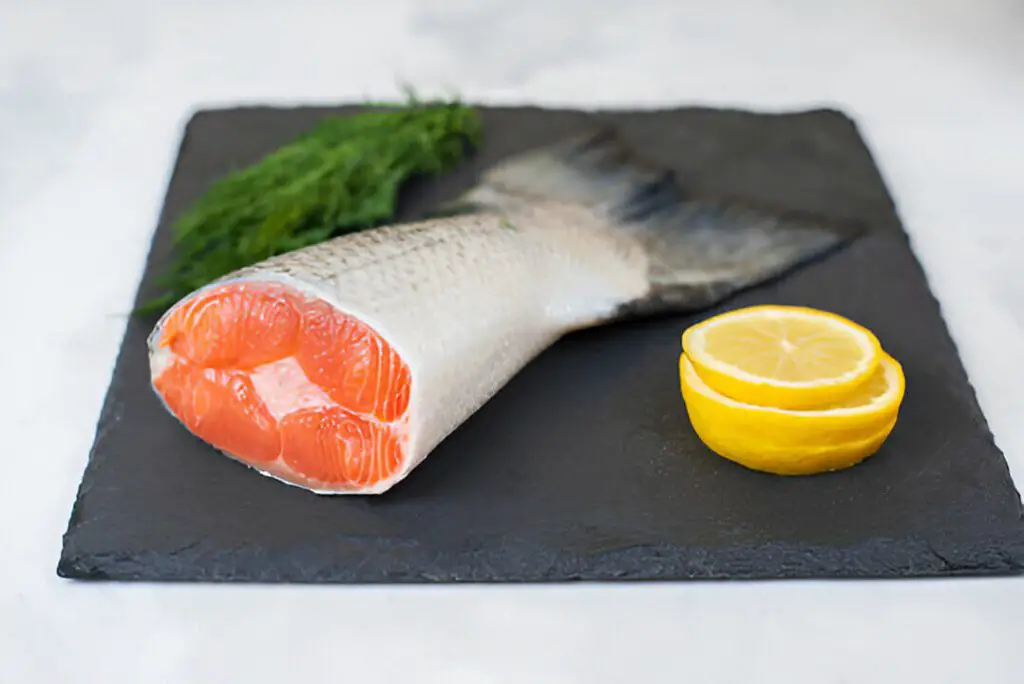
While center cut salmon fillets get most of the glory and attention, it’s worth giving the oft-overlooked tail fillets their due as well. Though they may not be as thick, fatty, or evenly-shaped as center cuts, tail portions of salmon absolutely have their own unique virtues.
Tail fillets come from the tapering end of the salmon, where the fish starts getting narrower towards the fin area. This means the fillets cut from this section will be considerably thinner and smaller compared to those center cut hunks. Depending on the size of the salmon, tail fillets may only be an inch or two wide at their narrowest point.
Their slender shape gives tail fillets some pretty distinct characteristics in terms of both texture and cooking. For one, you’ll get a much higher ratio of crispy, crackling skin relative to the tender flesh underneath. Those thinner portions allow the skin to get intensely browned and crunchy while the meat stays moist. The high surface area also means more spots for developing those coveted caramelized, seared flavor notes.
On the flip side, that thin, tapering shape also requires more careful attention during cooking to prevent any overdone or dried out sections. Tail fillets have very little room for error compared to the thick, forgiving center cuts. You’ll need to keep a very close eye to pull them at just the precise moment they hit the ideal doneness.
Another factor that sets tail fillets apart is the flesh texture itself. While center cuts are admired for their lavish, melt-in-your mouth richness, tails have a firmer, flakier, and altogether lighter chew. You’ll find the flesh a bit more dense and meaty, with less of that buttery softness.
The tail area also tends to have more pin bones running through it versus the center portion. This makes for a slightly more annoying eating experience, as you may need to check for and pull out those pesky pin bones before digging in. Center cut fillets are largely free of any bones.
However, this higher bone content could actually be viewed as a positive from a flavor perspective. Those bones allow more of the salmon’s natural fats, aromatics, and amino acids to be retained during cooking rather than being lost. This can translate to a richer, more concentrated seafood essence in tail fillets compared to boneless cuts.
Another unique advantage of tail fillets is their amenability to certain global flavors and preparations. Their narrower shape makes them perfect for things like bacon-wrapping, where larger center cuts may be too clunky. Tail fillets are also phenomenal for dishes that call for individual, tidy salmon portions like in Asian-style fillets or teriyaki preparations.
While center cuts are known for their succulent, fork-tender luxury, tail fillets instead aim for a delicate, refined elegance. Their inherent delicacy makes them wonderful for recipes highlighting bright flavors like citrus, herbs, or acidic components that could overwhelm a richer center cut. They provide a lighter canvas to let those flavors truly sing.
From a budget perspective, the smaller tail portions are also a more economical option compared to pricey center cut fillets sold by weight. So if feeding a larger family or crowd on a budget, tail fillets could be the way to go to stretch those salmon dollars further.
FAQs
Can you freeze center cut salmon fillets?
Absolutely! Center cut fillets freeze exceptionally well. To freeze, rinse the fillets under cold water and pat them completely dry with paper towels. Then wrap them tightly in plastic wrap, pressing out any air pockets. For best quality, use frozen center cuts within 3-6 months. To thaw, transfer to the refrigerator overnight.
What’s the best way to remove the skin from a center cut fillet?
Start with a very sharp knife or fish skinning pliers. Grab the thin tail end of the skin and angle your knife to slice between the flesh and skin, holding the skin taut. Work in one continuous motion toward the thicker end to peel off the entire skin in one piece.
How can you tell if a center cut salmon fillet is fresh?
Look for fillets with a vibrantly colored flesh, free of discoloration or browning. The flesh should be firm to the touch and free of white albumin proteins forming on the surface. Fresh salmon should have a mild, clean aroma without any overly fishy smell.
Is it safe to eat the thin gray/purple portions on a center cut fillet?
Yes, those are just the darker muscle fibers close to the salmon’s bloodline. They are perfectly safe and edible, just with a slightly stronger salmon taste than the lighter portions.
How should you season a center cut salmon fillet?
The possibilities are endless! Try simple salt, pepper, lemon, and herbs like dill or parsley. Or rub with spice mixes like jerk, Cajun, or teriyaki. Salmon loves sweet glazes made from ingredients like maple syrup or brown sugar as well.
How much salmon per person for center cut fillets?
A good rule of thumb is 6-8 oz of salmon per person, depending on appetite. So a 1 lb center cut fillet (16 oz) feeds 2-3 people comfortably with sides.
Is it better to buy skinless or skin-on center cut fillets?
Skin-on is usually preferable. The skin protects the flesh and locks in moisture during cooking. It also gets delightfully crispy when cooked properly. However, skinless makes for easier prep and eating.
